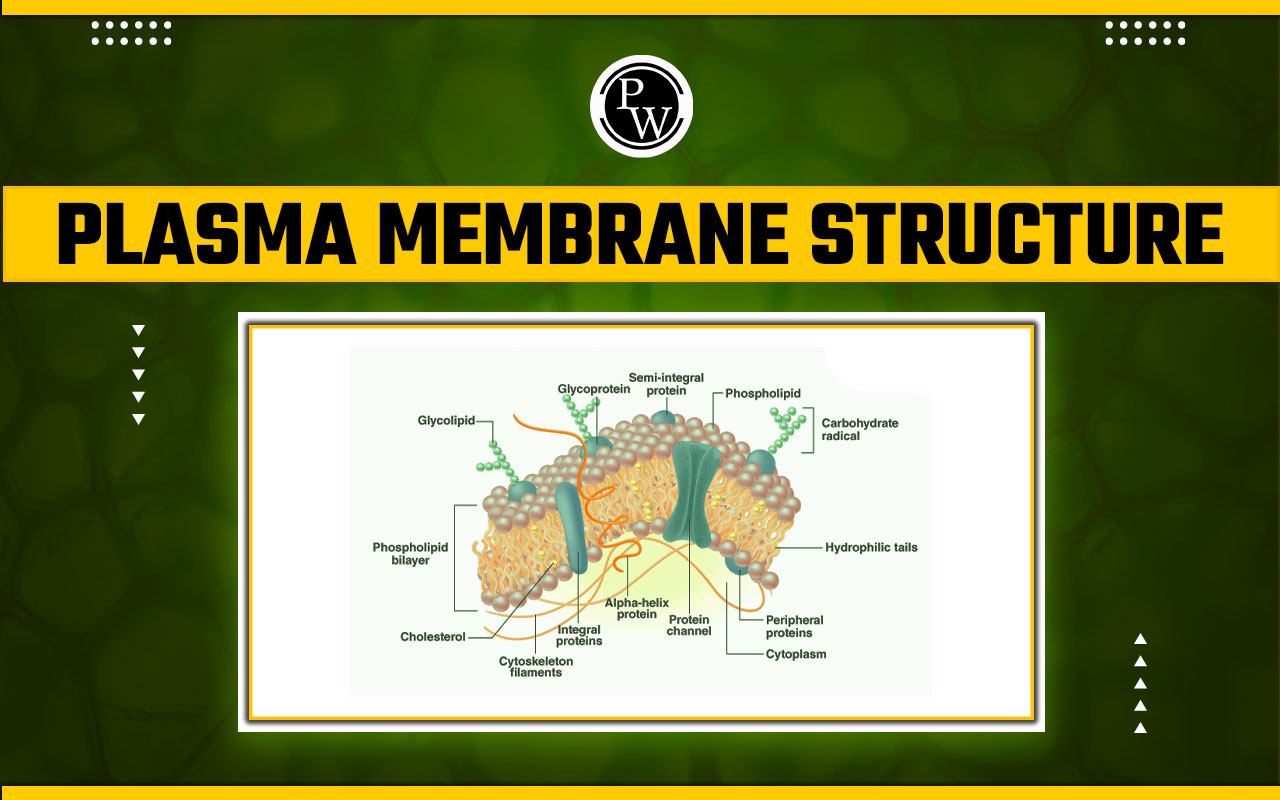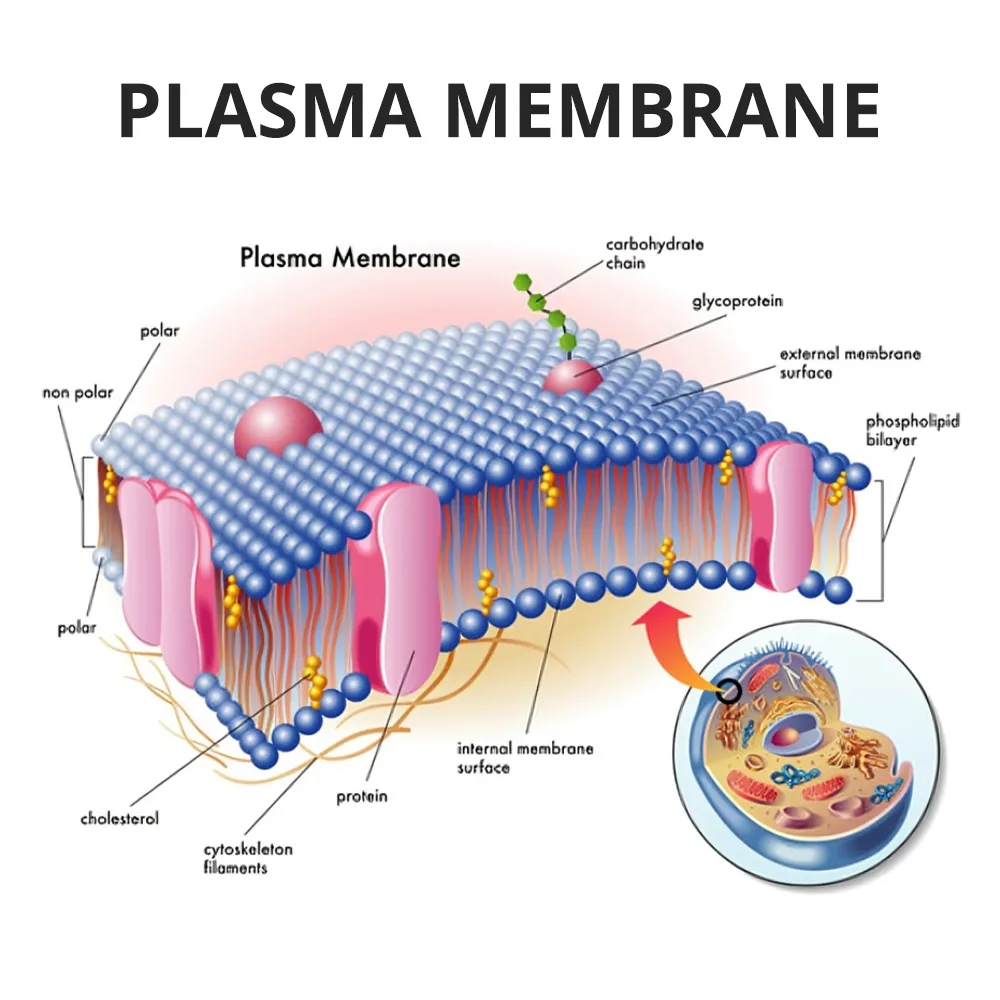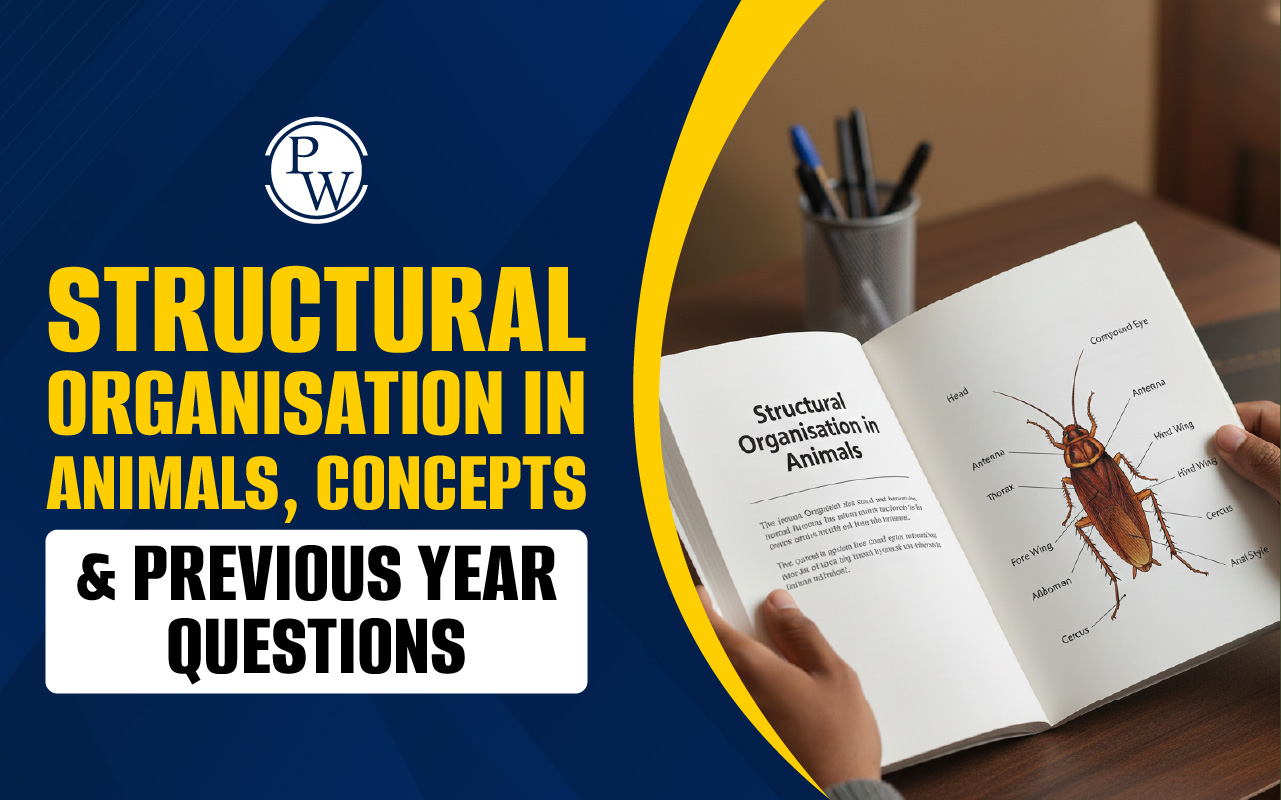

Plasma Membrane Structure: The plasma membrane, also known as the cell membrane, comprises a phospholipid bilayer interspersed with proteins. This bilayer consists of two layers of phospholipids with polar heads facing outward and non-polar tails facing inward, creating a barrier impermeable to water. The outer layer is rich in phosphatidylcholine, sphingomyelin, and glycolipids, while the inner layer contains phosphatidylethanolamine, phosphatidylserine, and phosphatidylinositol.
Embedded within the membrane are proteins that selectively facilitate the transport of particles across the membrane. These proteins can be classified into two types: integral proteins, which are fully embedded in the lipid bilayer, and peripheral proteins, which attach to the membrane through their terminus region. Additionally, the plasma membrane contains cholesterol and glycolipids, which contribute to its structural integrity and functionality. Together, these components form a dynamic barrier that regulates the passage of substances in and out of the cell. The detailed NEET Biology Notes on Plasma membrane structure and functions, along with its components are provided below.What is Plasma Membrane?
The cellular Plasma Membrane consists of a Lipid Bilayer incorporating embedded Proteins. The hydrophobic core of the lipid bilayer repels water, while the Hydrophilic regions on both the inner and outer sides of the cell enable water to permeate the structure via osmosis. Furthermore, the Membrane features different types of Protein structures, such as integral Proteins fully integrated into the lipid bilayer, and peripheral Proteins that attach to the Membrane through their terminal regions.
Plasma Membrane Components
The membrane is made up of the following components:Phospholipids: These molecules form the basic structure of the membrane.
Peripheral proteins: These proteins are found on the inner or outer surfaces of the phospholipid bilayer but are not embedded within the hydrophobic core.
Cholesterol: This molecule is wedged between the hydrophobic tails of the phospholipid membrane.
Carbohydrates: These are attached to lipids or proteins on the extracellular side of the membrane, forming glycolipids and glycoproteins.
Integral proteins: These proteins are embedded within the phospholipid bilayer. Phospholipids naturally organize themselves into a bilayer, and their interactions with water allow the formation of the plasma membrane. Proteins are interspersed among the lipids that make up the membrane. Transmembrane proteins, in particular, facilitate the passage of molecules into cells through channels, gates, or pores that would otherwise not be able to enter. Therefore, cells regulate the flow of molecules and also perform other functions such as cell recognition and signaling. Carbohydrates, typically found in the plasma membrane, are part of glycoproteins, which form when carbohydrates bind to proteins. Glycoproteins play a significant role in cell-to-cell interactions, including cell adhesion.
Plasma Membrane Structure
The plasma membrane, a vital component of cells, consists primarily of lipids, proteins, and carbohydrates.1. Lipids
Phospholipids: These are the main structural components of the plasma membrane. Phospholipids consist of glycerol, two fatty acid tails, and a phosphate-linked head group. They are amphipathic, meaning they have both hydrophilic (water-attracting) and hydrophobic (water-repelling) regions. Phospholipid Bilayer: Biological membranes typically have two layers of phospholipids arranged with their hydrophobic tails facing inward and their hydrophilic heads facing outward, creating a phospholipid bilayer.2. Proteins
Integral Proteins: These proteins are embedded in the phospholipid bilayer, with at least one hydrophobic region anchoring them to the membrane. Some integral proteins span the entire membrane (transmembrane proteins), while others only partially enter the membrane. Peripheral Proteins: These proteins are found on the surface of the membrane, either attached to integral proteins or to phospholipids. They are more loosely attached compared to integral proteins.3. Carbohydrates
Carbohydrates are present on the outer surface of the plasma membrane and are attached to proteins (glycoproteins) or lipids (glycolipids). These carbohydrate chains act as cellular markers that help cells recognize each other. They are important for immune system function, allowing immune cells to differentiate between self and non-self cells.4. Cholesterol
Cholesterol is another lipid found in the plasma membrane, interspersed among the phospholipids. It helps maintain the fluidity and stability of the membrane. At lower temperatures, it prevents the phospholipids from packing too tightly, maintaining fluidity. At higher temperatures, it reduces fluidity, ensuring the membrane remains functional.Sexual Reproduction In Flowering Plants
Proportions in a Typical Human Cell
Proteins: Approximately 50% of the membrane's composition by mass.Lipids (including cholesterol): Around 40%.
Carbohydrates: The remaining 10%.
Water: Constitutes about 20% of the membrane.
The structural arrangement and composition of the plasma membrane ensure its functionality as a selective barrier that regulates the passage of molecules in and out of the cell.
Fluid Mosaic Model of Plasma Membrane
The structure of the plasma membrane is described by the fluid mosaic model, which depicts it as a mosaic composed of cholesterol, carbohydrates, proteins, and phospholipids.Fluid Mosaic Model
First proposed in 1972 by Garth L. Nicolson and S.J. Singer, this model explains the structure of plasma membranes. Although the model has evolved over time, it remains the most effective way to describe the functions and structure of plasma membranes. The model characterizes the plasma membrane as a mosaic of components, including proteins, cholesterol, phospholipids, and carbohydrates, which impart a fluid nature to the membrane.Composition of the Plasma Membrane
The thickness of the membrane ranges from 5 to 10 nanometers. The composition of the plasma membrane, including the proportions of carbohydrates, lipids, and proteins, varies from cell to cell. For example, the inner mitochondrial membrane comprises 24% lipid and 76% protein, while myelin contains 76% lipid and 18% protein.Phospholipids
Phospholipids are the primary constituents of this membrane and are amphiphilic. The hydrophilic regions of these molecules interact with the aqueous fluid inside and outside the cell, while the hydrophobic regions are non-polar. A phospholipid molecule consists of a three-carbon glycerol backbone with two fatty acid molecules attached to carbons 1 and 2, and one phosphate-containing group attached to the third carbon.Proteins
Proteins are the second major component of the plasma membrane. Integral proteins, or integrins, fully integrate into the membrane structure, with their hydrophobic regions interacting with the hydrophobic regions of the phospholipid bilayer. Single-pass integral membrane proteins typically have a hydrophobic transmembrane segment comprising 20-25 amino acids. Some of these proteins traverse only a portion of the membrane, interacting with one layer, while others span from one side to the other, exposing parts to both sides.Carbohydrates
Carbohydrates are the third most important component of the plasma membrane. They are primarily found on the outer surface of cells, linked either to lipids to form glycolipids or to proteins to form glycoproteins. The carbohydrate chain can consist of two to sixty monosaccharide units, which can be branched or straight.Role of Carbohydrates
Carbohydrates and peripheral proteins form concentrated sites on the cell surface that allow cells to identify each other. This identification is crucial for the immune system to distinguish between the body's cells and foreign cells or tissues. These glycolipids and glycoproteins are also found on the surface of viruses, where they can vary, preventing immune cells from identifying and attacking them. On the exterior surface of cells, these carbohydrates, both in glycolipids and glycoproteins, together form the glycocalyx, which is highly hydrophilic and attracts large amounts of water to the cell surface. This helps the cell interact with its fluid-like environment and aids in the cell's ability to acquire substances dissolved in water.Plasma Membrane Functions
The plasma membrane, also known as the cell membrane, is the outermost layer of a cell and acts as a gatekeeper, controlling what enters and leaves the cell. It's a fascinating structure with several important functions. Here's a detailed breakdown of its key roles:1. Barrier and Gatekeeper: The plasma membrane's primary function is to create a physical barrier between the internal contents of the cell (cytoplasm) and the external environment. This separation is vital for maintaining the cell's internal environment, which is crucial for various cellular processes. The membrane is selectively permeable, meaning it allows only certain substances to pass through while restricting others.
2. Selective Transport: The selective permeability of the plasma membrane is essential for maintaining cellular homeostasis. Molecules cannot freely pass through the phospholipid bilayer due to its hydrophobic core. There are two main mechanisms for transporting molecules across the membrane: passive transport and active transport.
- Passive transport: Passive transport doesn't require energy from the cell. Small, nonpolar molecules (like oxygen and carbon dioxide) and water can easily pass through the phospholipid bilayer. Ions and larger molecules require protein channels to move across the membrane. These channels act like specific doorways, allowing only certain molecules to pass.
- Active transport: Active transport utilizes cellular energy (ATP) to move molecules across the membrane against their concentration gradient (from low concentration to high concentration). Carrier proteins are responsible for active transport, binding to specific molecules and shuttling them across the membrane.
4. Cell Adhesion and Recognition: The plasma membrane also contains glycoproteins and glycolipids on its outer surface. These sugar-coated molecules act as identification tags, allowing cells to recognize and adhere to other cells. Cell adhesion is essential for forming tissues and organs.
5. Cell Shape and Support: The plasma membrane, along with the cytoskeleton (a network of fibers inside the cell), helps maintain the cell's shape and provides support. The cytoskeleton attaches to the plasma membrane at various points, providing a framework that gives the cell its structure. In animal cells, key membranes include the plasma membrane, inner and outer nuclear membranes, endoplasmic reticulum (ER) and Golgi apparatus membranes, and inner and outer mitochondrial membranes. Membranes also separate lysosomes, peroxisomes, and various vesicles from the cytoplasm. In plants, additional membranes are found in plastids and vacuoles. These membranes serve various functions:
- Enclosure and Insulation: Membranes protect cells and organelles mechanically and chemically, maintaining concentration differences between intracellular and extracellular compartments.
- Regulated Transport: Membranes enable homeostasis by regulating the internal environment and selectively transporting substances through pores, channels, and transporters.
- Signal Transduction: Membranes receive and transmit extracellular signals, producing cellular responses.
- Enzymatic Catalysis: Membranes house important enzymes, facilitating reactions with apolar substrates like lipid biosynthesis and the metabolism of apolar xenobiotics.
- Energy Conversion: Key energy conversion reactions like oxidative phosphorylation and photosynthesis occur in membranes.
- Interactions with Other Cells: Membranes play roles in cell fusion, tissue formation, and communication with the extracellular matrix.
- Anchoring of the Cytoskeleton: Membranes help maintain cell and organelle shape and provide a basis for movement processes.
| NEET Exam Important Links | |
|---|---|
| NEET Syllabus | NEET Biology Diagrams |
| NEET Biology MCQ | NEET Biology Chapter wise Weightage |
| NEET Biology Notes | NEET Previous Year Question papers |
Plasma Membrane Structure FAQs
What are the three primary components of the plasma membrane?
The principal constituents of the plasma membrane are lipids (specifically phospholipids and cholesterol), proteins, and carbohydrates. The plasma membrane is a barrier, protecting intracellular components from the extracellular environment.
Describe the structure and function of the cell wall.
The cell wall is located outside the cell membrane and is characterized by its tough, flexible, and sometimes rigid nature. It is primarily composed of cellulose, long carbohydrate fibers including hemicellulose, lignin, and pectin. The main functions of the cell wall include providing structural support to the cell and protecting it against physical damage and invading pathogens.
What is the basic structure of a cell?
A cell consists of three main parts: the cell membrane, the nucleus, and the cytoplasm. The cell membrane surrounds the cell and regulates the movement of substances into and out.
Who is credited with the discovery of the plasma membrane?
The discovery of the plasma membrane is attributed to Robert Hooke. Also known as the cell membrane, it is a thin barrier that surrounds every living cell. The cell membrane is primarily composed of lipid-based fatty acids and proteins.
Why is the cell membrane referred to as a bilayer?
The cell membrane is called a bilayer because it consists of two layers of lipids. The lipid heads are oriented towards opposite sides (the interior and exterior of the cell), while the tails (the two fatty acids) are located inside the layer, facing each other.
Talk to a counsellorHave doubts? Our support team will be happy to assist you!

Check out these Related Articles
Free Learning Resources
PW Books
Notes (Class 10-12)
PW Study Materials
Notes (Class 6-9)
Ncert Solutions
Govt Exams
Class 6th to 12th Online Courses
Govt Job Exams Courses
UPSC Coaching
Defence Exam Coaching
Gate Exam Coaching
Other Exams
Know about Physics Wallah
Physics Wallah is an Indian edtech platform that provides accessible & comprehensive learning experiences to students from Class 6th to postgraduate level. We also provide extensive NCERT solutions, sample paper, NEET, JEE Mains, BITSAT previous year papers & more such resources to students. Physics Wallah also caters to over 3.5 million registered students and over 78 lakh+ Youtube subscribers with 4.8 rating on its app.
We Stand Out because
We provide students with intensive courses with India’s qualified & experienced faculties & mentors. PW strives to make the learning experience comprehensive and accessible for students of all sections of society. We believe in empowering every single student who couldn't dream of a good career in engineering and medical field earlier.
Our Key Focus Areas
Physics Wallah's main focus is to make the learning experience as economical as possible for all students. With our affordable courses like Lakshya, Udaan and Arjuna and many others, we have been able to provide a platform for lakhs of aspirants. From providing Chemistry, Maths, Physics formula to giving e-books of eminent authors like RD Sharma, RS Aggarwal and Lakhmir Singh, PW focuses on every single student's need for preparation.
What Makes Us Different
Physics Wallah strives to develop a comprehensive pedagogical structure for students, where they get a state-of-the-art learning experience with study material and resources. Apart from catering students preparing for JEE Mains and NEET, PW also provides study material for each state board like Uttar Pradesh, Bihar, and others
Copyright © 2025 Physicswallah Limited All rights reserved.
Get App











